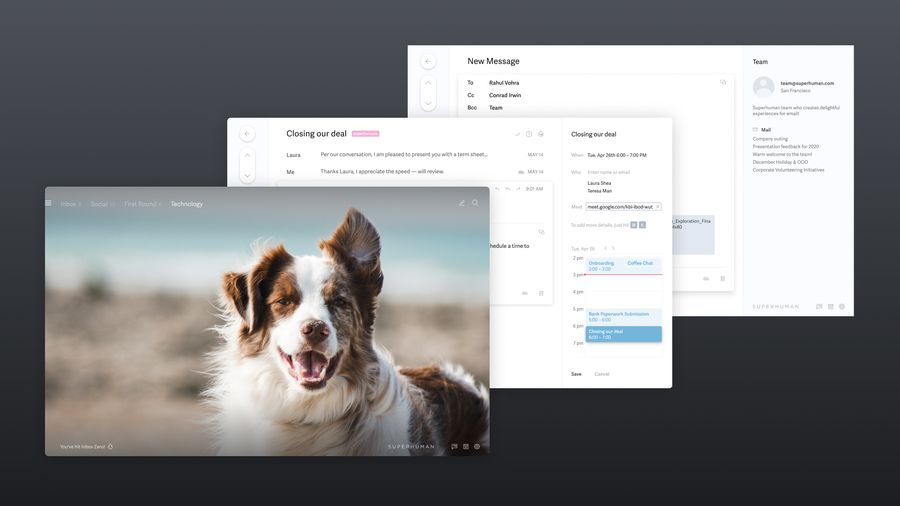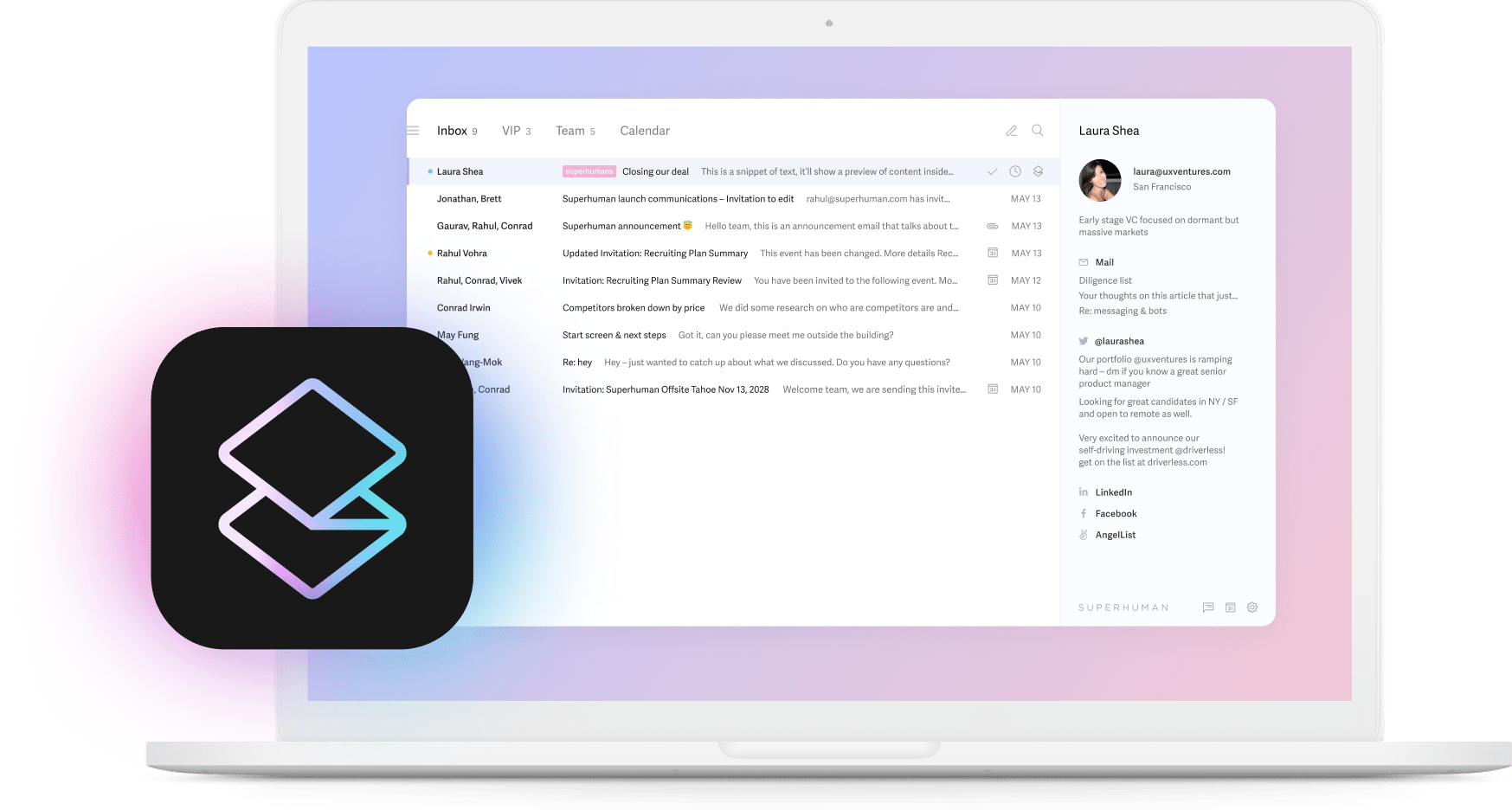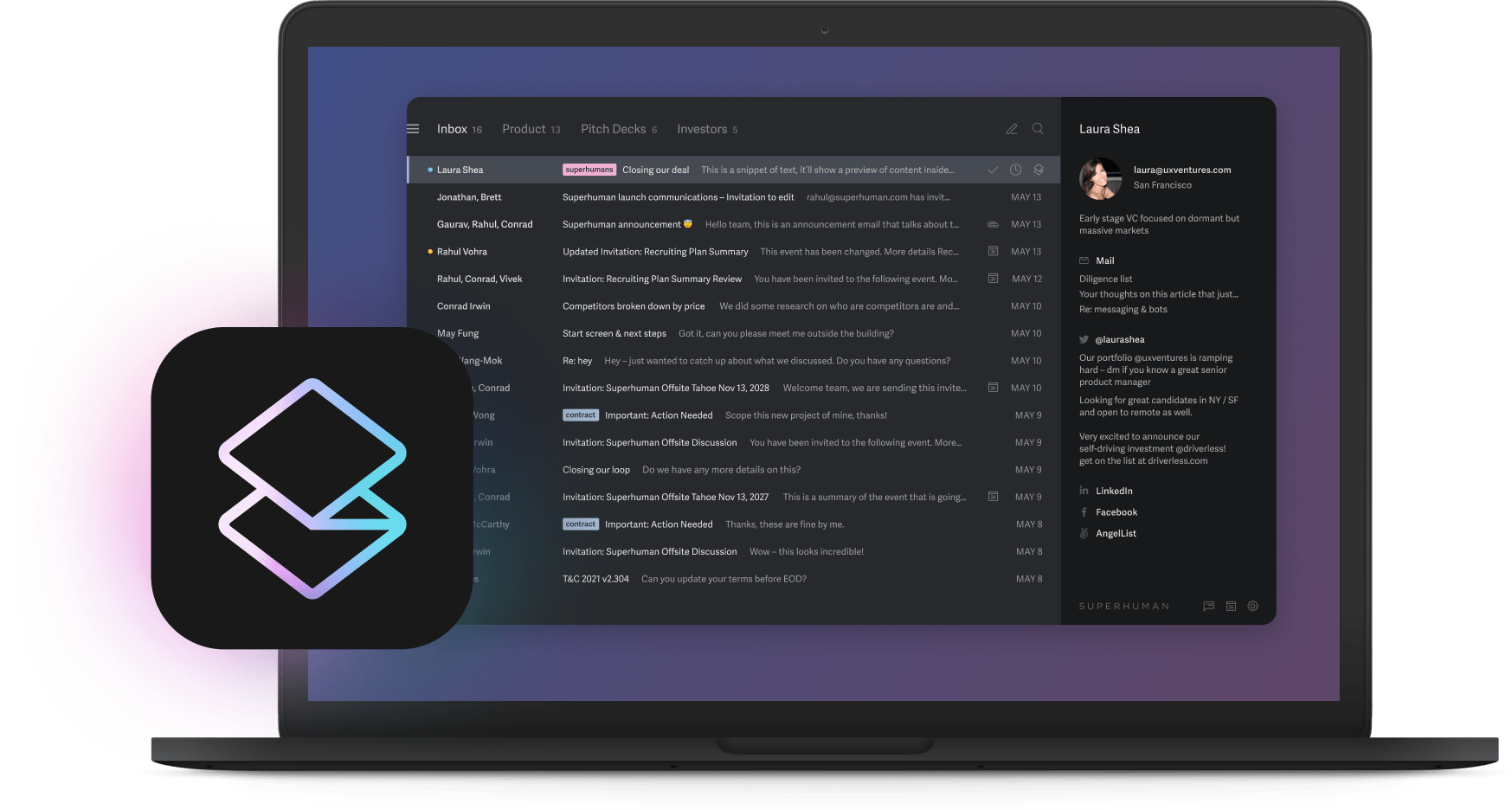
Screeching nails on a chalkboard, getting stuck in an elevator, awkward pauses — these are things that make us squirm! Yet, if given the opportunity, most would prefer these nail-biting experiences over having to ever endure a phone conversation with a telecommunications sales rep who is relentlessly trying to sell us something we don't want.
As humans, we don't like to be sold to, especially when we don't feel like we can trust the person doing the selling! And it's not getting any better. People trust each other less now than 40 years ago. Since 1972, interpersonal trust has declined and hit an all-time low in 2014.
As trust declines, the challenges for salespeople compound. Plus, virtual selling has made buyers more skeptical of the sales process. The rise in digitalization and remote working has made it harder to build trust and rapport with prospects without face-to-face contact.
How do you overcome these challenges? How do you build trust online and keep prospects engaged when you aren't meeting face to face? In this article, we'll give you the tools for rapport-building with clients online. Our four rapport-building tips cover how to build trust during video calls, on the phone, and via email. Let's go!
Nailing the sale: 4 tips to build rapport with clients online
Product demos, customer testimonials, and free trials — you can throw every proven tactic at your sales process yet never reach your quota if you're missing one critical element: trust. Trust is essential to building rapport and breaking down skepticism during sales communication, especially when engaging digitally.
How do you build trust and develop a rapport with clients and customers online? We'll discuss four ways and include top tips to help.
1. Rapport building with clients: general advice for success
Let's talk skills. To build rapport, regardless of the venue, the following skills will help you break down skepticism during your communications. Without them, it will be challenging to build trust and establish a professional relationship with clients and prospects.
Whether offline or online, rapport building with clients requires the following skills:
Practice empathy and be authentic
When you practice empathy, you seek to understand your prospect more deeply. What's going on underneath the surface? What are their deep needs and wants? Practicing empathy keeps you focused on pleasing the prospect and meeting their needs first.
How can you practice empathy?
Before you get on the phone or email a prospect, take a few minutes to yourself and reflect on why you're conversing with the prospect. What's in it for them? When you realize that you can be a solution to their problems and up-level their lives, you'll find more fulfillment, and your communication will come across as authentic.
If you don't fully understand the prospect's deep needs and wants, ask questions to show you care. Be warm, personable, and authentic. You can't fake empathy; it comes from being genuine, and it will show in your messaging and body language without you even having to try.
Take a look at these examples. Though they're both communicating the same thing, one comes from a warm and authentic place, and the other feels less genuine and sincere.
A quick note: all of the text represented above can potentially come across as authentic if you're coming from a sincere place. The examples show how slight nuances can make a difference but sometimes what you say is less telling than how you say it. If you're coming from a genuine place, authenticity will come across in your voice on a phone call or via video chat regardless of what you're saying.
Get prepared before you start the conversation
Building rapport starts long before your meeting.
Before meeting with a prospect, find out their personal and professional roles and interests so you can discover some common ground. Use these as conversation ice-breakers to establish a point of connection.
For example, you might learn from your prospect's Twitter feed that he roots for a particular hockey team. If you love the same team or another sport, start the conversation with this ice breaker and cut any initial tension to help the prospect feel more connected to you.
Don't get too personal
A shared appreciation of hockey is a great ice breaker! But don't go as far as discussing your failed relationships and political leanings.
It's not uncommon to blur the lines between client and friend, especially when you feel a strong connection with a prospect and a desire to develop your personal relationship. Know when to stop before you share too much. A minute or two of personal connection time is enough to establish genuine interest. If you find yourself communicating longer, notice your boundaries and corral the conversation back to the topic.
Focus more on the prospect than yourself
A sales meeting that focuses on only you and your company can derail the deal and end in failure. Your prospects want to feel like their needs and concerns are valid and understood. The more you can shift the focus onto their needs and how you can help them, the greater rapport you will build, which leads to more trust.
Don't close the sale too fast (or too slow)
Would you ask for your date's hand in marriage after meeting for the first time? Doing so will most certainly result in rejection, and it might also give you a reputation for being too desperate.
Is this your first call with a prospect? Have you or your sales team contacted this person before? Knowing these details will help you determine how fast to move. On the flip side, the further along in the sales process, the quicker your prospect will want to make a deal. If they are ready to purchase, a lengthy conversation might derail the opportunity for a sale.
Keeping these tips in mind, let's discuss building rapport during specific digital communication methods: video call, phone, and email.
2. How to build rapport via video chat
In a global study conducted by the RAIN Group Center for Sales Research of 528 buyers and sellers, buyers mentioned the four factors below as having the greatest influence on their purchase decision:
How do sellers fare among these four factors? Only one to three in 10 sellers do well in those four areas. Add to that the challenges of building rapport virtually, and you will understand why around 90% of sellers say that gaining buyers' attention, keeping them engaged, and building relationships virtually is a top challenge.
Selling, in general, requires skill and practice. But when selling virtually, you have to work a little harder. With distractions vying for your prospect's attention, staying on top of the conversation and controlling its direction are essential.
Here's how to do it.
Capture the first 30 seconds… and re-capture as needed
The first 30 seconds of a video chat can dictate how the next 30 minutes go. During the first seconds of the call...
- Make the recipient feel comfortable and understood. Quickish banter, comic relief, or small talk can warm up the conversation. "I promise not to bore you :)"
- To manage expectations, state your purpose for the call so the prospect understands what you will be talking about. "My purpose for meeting today is to have a quick dialogue and ask you a few questions about your needs and how I can help you. "
- Speak with confidence, yet also be warm and approachable. Confidence and arrogance can both make you feel "strong," but they are entirely different characteristics. Arrogance speaks loudly and overpowers the conversation. Confidence asserts quietly without being overbearing. Know the expert you are but realize that you are on the phone with an equal, and your goal is to uplevel their life. Keeping this in mind will help you stay humble and empathetic.
- Find common ground. If you did your research like we instructed in the last section, you might have found some information on your prospect. "Did you get to watch the Rangers game yesterday?"
After the initial dialogue, inject something that recaptures attention every few minutes, especially if you notice the prospect is losing interest or focus.
- Ask a question based on what the prospect answers to previous questions. You will know what to ask to get the conversation back in gear if you're listening intently. "You mentioned that you have issues with your current software provider. How have you been trying to navigate that?"
- Ask for their opinion: "I'd love to get your opinion on something if you're OK with that. Regarding that last presentation you saw, what would you improve about it?"
- Use visuals: Interrupt the flow with visuals to keep the prospect engaged (screenshares, diagrams on paper). Something as small as a visual diagram can help to increase engagement and keep the prospect focused on the conversation.
- Take an interest in them. "I saw an adorable cat in the background before, and it caught my attention!"
Pay attention
This is important with all correspondence, whether by phone, video, or in-person, but it's especially critical when the prospect can see your face.
Sure, your phone might be buzzing, and your dog clawing at your office door, but don't try to multitask during a video call! Give the prospect your full attention. Sure they might not be able to see you catching up on your email or petting your dog, but they will still pick up on your lack of attentiveness. A slight loss of focus or attention and drifting eyes will give it away.
Observe their body language
Is the prospect checking their phone? Are they fidgeting, looking bored, or uninterested? Notice their body language and adjust the conversation accordingly. Also, ask questions to reengage focus.
For example, if the prospect is crossing their arms, yawning, or squirming a lot, they might not fully engage with you. Or, if they are crossing their arms or unknowingly grimacing or frowning, they could be displeased with the conversation's direction.
Observe your body language
You can steer the conversation and communicate nonverbally using your body language.
Leaning
Leaning forward or backward will communicate something to buyers without you ever saying a word.
Leaning forward will show encouragement and that you're connecting to what the buyer is saying. Do this when you want to show your approval for what the prospect is saying and smile as you do it.
Leaning forward, however, during the wrong time can send the wrong message. Leaning forward could be misconstrued as aggression if a buyer objects to what you're saying. In this case, leaning back and keeping your arms uncrossed will show that your defenses are down and you're actively listening.
Head nodding
Nod your head throughout to show the prospect that you agree with what they're saying and listen with intent.
Relaxing your facial expressions
If you're like me and you have a strong case of RBF, you'll have to work extra hard just to make it look like you're not mad at the world every day of your life!
Look at your face in the camera and notice how you're coming across. If you look ready to scream at someone even though you're not trying to, turn your cheeks up slightly and soften your face, so you look more like you feel.
Looking directly at the camera
Position your camera so you can look directly into it. This way, your prospect will be seeing your eyes as you speak. When the camera isn't directly in front of you, you'll likely look at the screen while you're talking, but to your prospect, you won't be looking directly at them because you're not talking into the camera. This subtle change can make a big difference since you can make eye contact and establish a connection quicker.
3. Building rapport over the phone: steering the conversation in the right direction
When you get a prospect on the phone, you can hear their tone of voice and vice-versa, which leads to building rapport quickly.
But phone calls come with their disadvantages. Sure, you can hear the prospect's tone and respond in real-time, but you can also keep the client on for too long and talk over them. Plus, you can't see their body language and adjust based on your observations.
In addition to some of the other tips we discussed in previous sections, here are some tips on nailing that prospect phone call every time:
- Smile. Why smile if the recipient can't see you? Smiling makes your voice and tone sound more friendly. Go ahead and try it!
- Ask questions. Similar to video chatting, asking questions works on phone conversations.
- Let the recipient talk. If you can't see the prospect's body language, you might not notice the cues that you're overtalking. Avoid overtalking and cutting the person off while they're speaking. Check in with yourself. If you've been talking for more than a few minutes, stop and reengage with the prospect.
- Listen intently. When you're engaging in active listening instead of waiting to recite a script or get to your talking points, you can respond in real time to your prospect's needs and tailor the conversation to their concerns, which builds trust. It's OK to use a script if you need it (I'm one of those people!). But be flexible with it, and don't be afraid to go off-script once in a while.
4. How to build rapport via email: making the impersonal, personal
Email can be the most impersonal communication method, so it takes a little more effort to build a good rapport.
Here are some ways to build rapport with someone you might never see in person or via video.
Segment your email lists
How do you stand out among competitors?
Don't just send a general email to all prospects. Target them based on your prospect's needs!
One way to do this is to segment your email lists by customer persona.
Let's say your product caters to two different personas with differing needs. How you communicate to them will differ.
If one of your personas is a marketing director at an enterprise company, your language should target their needs (like team collaboration, marketing trends, and KPIs). The sales process for this persona will also be longer because there might be multiple stakeholders making decisions.
Yet a small business owner might respond to language around early business struggles, balancing profits and expenses, and maintaining steady growth. The sales process will likely be shorter as well.
If you send the same general email to both personas, it will delay or extinguish the rapport-building process because you won't be able to address their unique concerns and needs.
Offer something for free
Another way to stand out is to offer something valuable for free. Anything from an ebook or report to training or educational information can help prospects feel more connected to your brand and product.
Just make sure the freebie meets the prospect's needs, and it brings value to their professional lives. This goes back to knowing their needs and targeting your personas correctly.
Read our ultimate guide to writing emails that inspire action.
Gather information on a prospect
Earlier in the article, we talked about getting prepared and looking up a prospect before contacting them. This can help you build early rapport with new clients via email.
Gathering information on a prospect can be time-consuming, however. Scouring social media sites can slow you down and turn into a huge distraction if you let it. Using an automated system can turn this DIY task into an automated one.
Superhuman is email management software on steroids. In addition to providing clients with a blazingly fast and streamlined email experience, the software compiles a contact's social data and displays it for easy viewing.
With one click, see a contact's social profiles, job titles, and background information.
With Superhuman, you can also undo sent messages in case of typos or mistakes. View read receipts, so you know when a recipient reads and interacts with your message. Tailor your follow-up and alter your communication depending on whether or not the recipient opened and read the email.
Here are some other tips to remember when sending sales emails:
- Keep it personal. Don't use a generic email template.
- Keep your emails brief. Your prospect will likely scan your email, and if it's too long, disregard it altogether. Get their attention right away with a statement that focuses on their needs and a friendly personal note to break the ice.
- Rethink sending. Is the recipient someone who could become a customer? Prospects likely receive hundreds of emails, but many might not even target the prospect's needs. As a freelance writer and ecommerce store owner, I have specific needs, yet I receive cold emails from development firms wanting me to create an app with them or new authors wishing to send me a copy of their new book. I would say that 95% of the emails I get are not relevant to my needs, and even if they were, most do not appeal to me as they focus more on themselves. That brings me to my next point...
- Be patient, especially with email. Building rapport via email messaging takes time. Start small and get to know the prospect. Don't vie for the sale too fast. First-time interactions should focus on building professional client relationships around mutual trust. Everything else will fall into place after that is established.
- Ask open-ended questions to elicit a response. Prospects will scan emails and might not respond unless prompted. Start a conversation by asking the right questions. What questions should you ask? Keep the focus on them. That means asking for input on their needs. What is it they would like to know from you? What would they want to talk about? Put the ball in their court and allow them to steer the conversation to prove to prospects that you value their input more than just getting the sale.
Speed up, simplify, and perfect your virtual sales process with Superhuman
With more and more people working from home, digital sales correspondence is becoming more commonplace. You're meeting prospects for the first time via email or video chat, so making an excellent first impression and building rapport without a face-to-face meeting is critical.
Superhuman's social data intelligence can speed up your correspondence and help you craft the perfect sales content.
Superhuman offers the following features:
- Social insights: Inside the Superhuman email interface, pull up a contact to discover what a prospect looks like, their role, and location. The insights make it easy to find ice-breaker topics, write effective emails, and prepare for sales calls without leaving Superhuman's interface.
- Speed up email management with unique features such as Split Inbox (segment your emails to organize sales contacts by characteristics), automate follow ups, snooze conversations, shortcuts (speed up your email creation), and more.
- Get to Inbox Zero faster than you ever thought possible and regain control over your email inbox!
If you want to learn how to improve your sales process and quickly build rapport with your clients while enjoying a blazingly fast and enjoyable email experience, give Superhuman a try.






